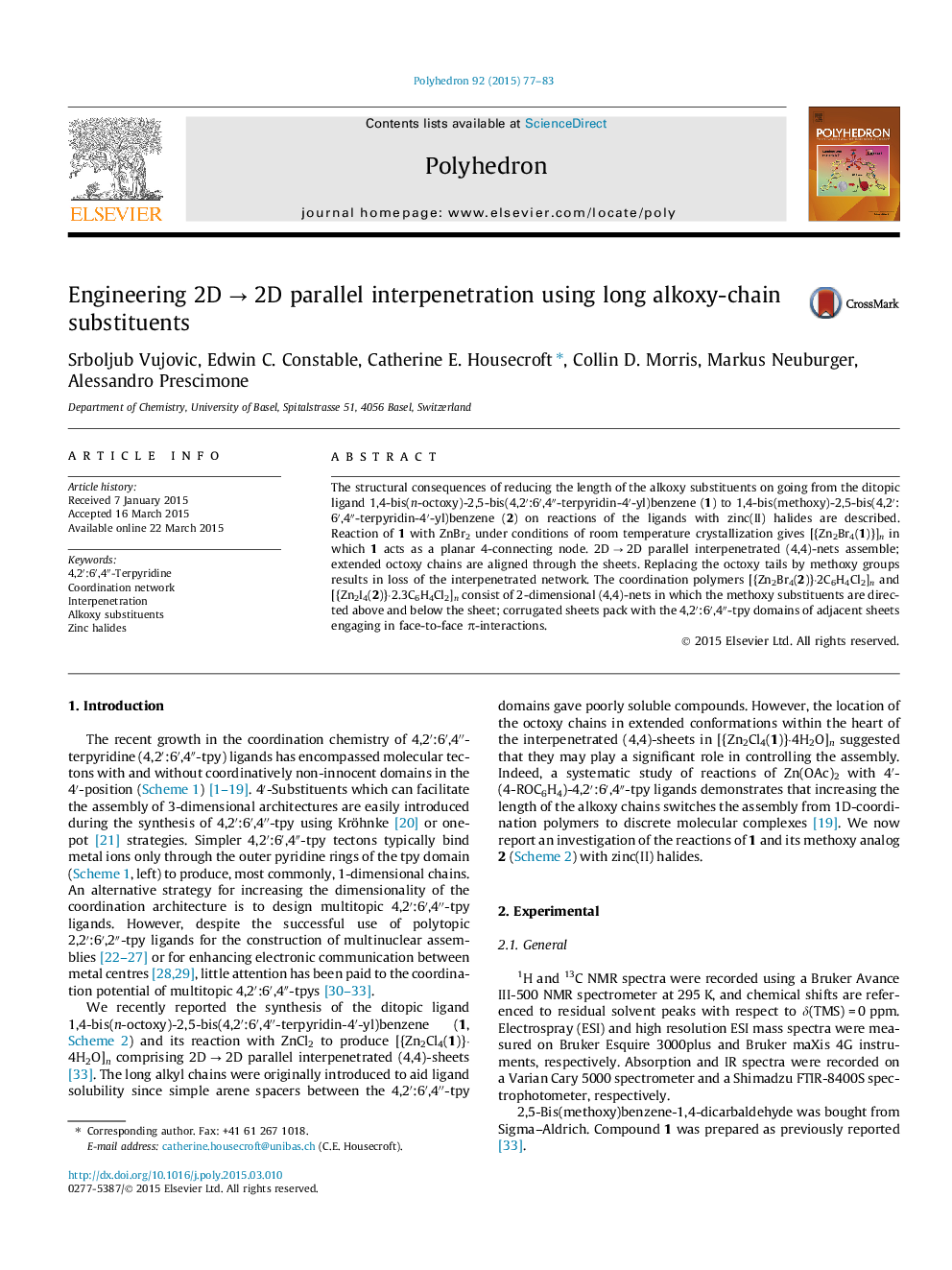| Article ID | Journal | Published Year | Pages | File Type |
|---|---|---|---|---|
| 1336055 | Polyhedron | 2015 | 7 Pages |
The structural consequences of reducing the length of the alkoxy substituents on going from the ditopic ligand 1,4-bis(n-octoxy)-2,5-bis(4,2′:6′,4″-terpyridin-4′-yl)benzene (1) to 1,4-bis(methoxy)-2,5-bis(4,2′:6′,4″-terpyridin-4′-yl)benzene (2) on reactions of the ligands with zinc(II) halides are described. Reaction of 1 with ZnBr2 under conditions of room temperature crystallization gives [{Zn2Br4(1)}]n in which 1 acts as a planar 4-connecting node. 2D → 2D parallel interpenetrated (4,4)-nets assemble; extended octoxy chains are aligned through the sheets. Replacing the octoxy tails by methoxy groups results in loss of the interpenetrated network. The coordination polymers [{Zn2Br4(2)}·2C6H4Cl2]n and [{Zn2I4(2)}·2.3C6H4Cl2]n consist of 2-dimensional (4,4)-nets in which the methoxy substituents are directed above and below the sheet; corrugated sheets pack with the 4,2′:6′,4″-tpy domains of adjacent sheets engaging in face-to-face π-interactions.
Graphical abstract[{Zn2X4L}]n (X = Br, I), where L is a bis(4,2′:6′,4″-terpyridine) with methoxy substituents in the spacer, forms single (4,4) nets, but when n-octyloxy chains are introduced the assembly switches to 2D → 2D parallel interpenetrating (4,4) nets.Figure optionsDownload full-size imageDownload as PowerPoint slide
